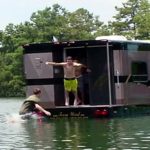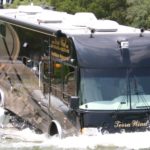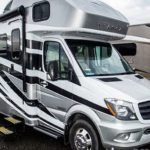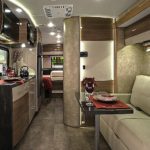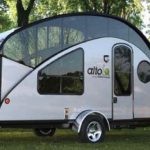A Bit About the Biggest Rigs
Freightliner
Freightliner is a true American truck. When other trucks couldn’t handle the terrain in the Western United States, Freightliner stepped up and started altering them and then eventually making their own trucks to haul up steep grades and over long distances. Though production was halted during World War II, Freightliner picked right back up, moving its headquarters from Utah to Oregon.
Manufacturing has taken place in both the United States and Canada, mostly in the Western and MidWest states (such as Ohio, Oregon, and Utah). Though the company has changed hands several times since its inception in the 1930’s, 2018 has been a good year for Freightliner, which has promised to hire a large number of individuals for their Ohio plant, as there has been a purchasing increase in the recent past. The market has also become global, including such places as Germany, South Africa, and New Zealand.
Freightliner is best known for their class 5-8 trucks, and their biggest, most popular seller is the class 8. They have also done work in the form of full-size vans and bus chassis, which are available as cargo vans and school buses, respectively. One of the newest ventures for Freightliner is their team-up with Tesla, which is providing an electric motor for Freightliner’s vans.
Kenworth
Unlike Freightliner, Kenworth produces only medium and heavy-duty class 8 trucks. Based out of Washington State (though originally also from Oregon as well), Kenworth’s reach is also global, with products being manufactured and sold in the United States and Canada as well as in Mexico and Australia. They were the first American company to sell trucks that came standard with diesel engines. What began in 1912 as a small family business grew into what is now one of three companies owned by PACCAR.
Kenworth also boasts star status, as some of its tractors and trucks have been featured in TV and film – the 1970’s show “Movin’ On” and the 1989 James Bond film “License to Kill”. Adding to that, they have also been the recipients of the J.D. Powers Award multiple times, the latest in 2007 for “Heavy Duty Truck Product Satisfaction”.
Though it was a large part of the bus industry at one point, most of its history has been largely forgotten, though there have been some efforts made to preserve such knowledge and models for future generations. An online museum, the “Gillig Transit Coach/Pacific School Coach Online Museum” has been responsible for maintaining information and photographs of this part of our automotive history. There is also a historical society, and Kenworth is often remembered during such events as the American Truck Historical Society’s Annual Truck Show.
Mack
Unlike the other truck companies present in this list, Mack has retained its name (though it is now a subsidiary of AB Volvo, along with French company Renault) as well as the distinction of being the only American East Coast company that manufactures trucks, though instead of the typical classes, they provide class 8-13. They were previously known for their bus and trolley bus models as well. During World War II, Mack produced many trucks that were used by the American army.
Mack’s manufacturing facilities are centered in Pennsylvania, with other locations in Venezuela, Australia, as well as other states along the East Coast, such as Maryland and North Carolina. Mack trucks are sold throughout North America, South America, Europe, and New Zealand and Australia. While most of Mack’s trucks have been used for hauling, there was a period of their history in which they produced fire trucks, some of which are still being used today via refurbishment.
The story behind Mack’s emblem, a bulldog, hails from World War I, when America sold many trucks to the British, who used the trucks on the front lines of the war. The shape of the Mack’s front, short and squashed, was reminiscent enough of the bulldog to warrant a nickname, and later this was incorporated into today’s gold or chrome emblem adorning all Mack products.
Peterbilt
What does Peterbilt have in common with fellow giant truck company Kenworth? They’re practically family, in a sense. They’re both owned by PACCAR, though of course neither of them started out that way. Peterbilt, however, has two base locations, one in the United States (Texas) and one in Canada (Quebec).
Started in the late 1930’s, Peterbilt originally hailed from California, but moved offices to Texas in the late 1980’s. The reason for its California roots was the lumber business. T.A. Peterman, the originator of the company, was a lumberman himself, and needed a way to get lumber from Washington to its various destinations. Lacking his own designs, he began altering military vehicles for the purpose, then purchased Fageol Motors during the Great Depression and began selling his own vehicles to the general public.
The ever popular Peterbilt 379, still collected, restored, and driven by fans of the brand, arrived on the scene in the late 1980’s, only bowing out in the late 2000’s. Its long nosed design was easy to spot, though it did go through several variations over the years, especially in the interior design of the truck. Currently, Peterbilt produces over a dozen different models, from the client-aided design of the 579 to the 330, 337, and 348, which are used in the creation of such vehicles as fire engines and snowplows.
Volvo
Volvo trucks also shares family connections with another truck on this list, the Mack. Volvo trucks were incorporated into the main Volvo brand after the company underwent restructuring in 2012. In 2016, it was recognized as the second largest company to produce a line of heavy-duty trucks. Based in Sweden, Volvo also has several factories around the world, in places like Russia, China, Brazil, the USA, and Belgium.
The company came to be in the late 1920’s, and became a rousing success after it sold 500 units of its new vehicle. Nowadays, however, they make upwards of 190,000 units every year. Each acquisition opened up new markets, and today the Volvo brand is made and sold all around the world in over 70 countries. The original model, the LV1, gave way to a dozen different models sold across five continents. The Volvo F-Series (FH, FL, FE, etc.) is generally sold in Europe, Africa, Asia, and South America, while the V-Series (VHD, VNL, VNM, etc.) is marketed more toward North America and South America.
Like other big trucks, Volvo’s models are used in a variety of situations. Some become dump trucks, others big rigs and haulers, while still others become garbage trucks and tractors. This ability to cater to a wide range of clients has helped Volvo stay at the top of the game.
Western Star
The youngest of the major truck companies on this list, Western Star began in the late 1960’s, three or four decades after the other companies on this list. Originally Canadian, with a plant in British Columbia, Western Star was bought by an Australian company and moved to the Pacific Northwest of the USA in the early 2000’s.
What differentiates Western Star from the others, however, is their specialization in class-8 vehicles, as well as their dedication to providing each customer with a unique vehicle. With a list of options including size of sleeper, various sized chassis, and five different packages for the interior, Western Star’s lack of uniform design aids them in providing each client with a vehicle that is tailored to their specific needs. They also regularly update their safety features to ensure that they are meeting safety standards around the world.
While some of their vehicles were used in the military, logging, and mining industries, Western Star has moved to the forefront of a more scientific and green agenda, with its XE (meaning eXtreme Efficiency) being the first aerodynamic vehicle Western Star has offered. Other models are often used for construction purposes, and can be fitted with cranes, tanks, and dump bodies.
Western Star is also known for its appearances in film, most notably Maximum Overdrive and the Transformers series.
Even if you’ve never been interested in trucks, there are a lot of fascinating things to learn about them. The more I explore this world, the more interesting it becomes. Peoples’ stories about what trucks have meant most to them, and how much they’ve traveled in them are worth hearing. If you, like me, are curious and want to learn more, there are several fan groups online that will gladly share information and details about meet-ups, should you wish to explore further and meet up with some of these dedicated fans in person.
What is a Luxury RV Park?
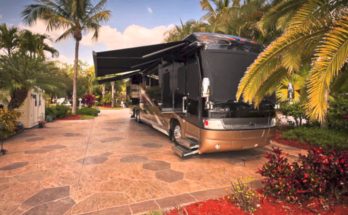
You’ve heard of ‘glamping’, the type of camping you want when you need some pampering in nature, but are you aware that there are luxury RV parks? These vacation destinations allow you to park your luxury RV (be sure you know what class vehicles are allowed – some only allow Class A) and enjoy the sights and sounds of exotic locations and partake in activities for the entire family without having to reserve hotel rooms, a bed and breakfast, or an Air BnB. These RV resorts cater to a more upper-class clientele, but if you can rent a luxury RV and want to save up for an unforgettable experience, it’s well worth the extra money. Typically there are plenty of things to do nearby, or that are offered by the resort, and there are luxury amenities such as you’d find in a world-class hotel. With beautiful views, plenty to do, and your own space, it’s the experience of a lifetime.
With locations in everywhere from Alabama to Utah, there’s a luxury RV resort for everyone, whether you want to mine for your own gems, take a yoga class, or golf, there’s a place for you. Some RV fans have even compiled lists of the best and most luxurious RV resorts in the United States, which you can check out at General RV and Campanda.
Motorhomes That Float
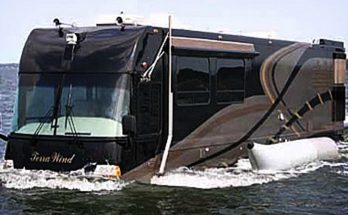
Despite it sounding like the latest cool gadget in the new James Bond film or Batman flick, there are indeed motor homes that can be driven on land as well as sailed on the water. While I wouldn’t recommend sailing out into the ocean, a seaside trip or a weekend at the lake would be sublime. These luxury amphibious motorcoaches (courtesy of Cool Amphibious Manufacturers International, LLC, or CAMI) come at a price, but there’s a lot to love, whether it’s the customization available or the navigation technology keeping you on track. While on the road, the “Terra Wind” can reach 80mph, and when it’s in the water, it can reach up to 7 knots.
Located in Ridgeland, South Carolina, CAMI also has other amphibious offerings, such as the Hydra-Terra, a commercial water bus, the Hydra Gator, a utility vehicle styled after the golf cart, and the Hydra Spyder, an amphibious sports vehicle. If you get a chance, it’s worth a visit to Ridgeland to see these beautiful vehicles in action. You can also peruse their website, request a brochure, watch some video, or read up on their new projects. There’s an extreme 6×6 amphibious vehicle being built that will be introduced in the near future, nicknamed “Daddy Gator”. All this and more you can find at the CAMI website.
Which Motorhomes Get The Best Gas Mileage?
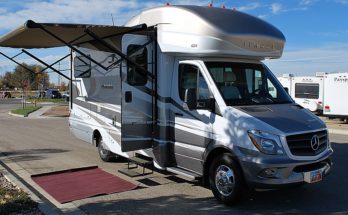
There are a few key factors to this question, the biggest of which is: what class of motorhome is being referenced in these questions? Another thing to keep in mind is that ‘green’ is an alternative, an extra luxury, not necessarily something that comes standard with the vehicle. That being said, there are a few that rise to the occasion and provide not only better gas mileage, but alternatives in design, customization, and color.
The top is a Class “C” Itasca Navion Motorhome. It can hold up to six people and it is diesel-powered. It can tow up to 5,000 pounds, and it is a favorite with conservationists who own motorhomes, since it only uses 18-20 miles per gallon.
The Itasca Reyo 25 “Q” is the biggest, in Class “A”, also diesel-powered. Despite its enormous size, the Itasca Reyo gets 18 miles to the gallon. Customer ratings are five-star, partially due to the smooth handling of the vehicle.
(It should be noted here that these two models are now under the Winnebago name. They are still available for sale).
Last but not least, the RoadTrek Adventurous RS, which is fuel-efficient while mainting a height that makes sense for the customer. With ceilings over 6 feet, there is plenty of head space.
If you’re looking for a more environment-friendly motorhome, you may want to consider one of the above options.
What Car Lasts The Longest?
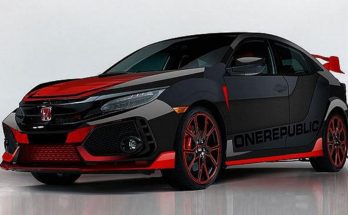
My family has had pretty good luck with vehicles. While there were a few duds in the bunch, we drove most of them to 200,000 or 250.000 miles. We had an Isuzu Trooper that kept going even after 300,000 miles. Part of the reason cars last longer is that they are well cared for – maintenance is key. Though some of us aren’t always able to schedule regular maintanence, it’s worth doing if you can save up or budget for it.
Luckily, the car that, according to information gathered by a large group of mechanics, compiled and presented on YourMechanic, isn’t that expensive to maintain. It also has great gas mileage, so that with the low cost of upkeep make it a popular choice with younger people just starting out. The Honda Civic’s average annual maintance costs are less than $225, and average mpg is 30. My youngest brother has a Honda Civic he bought used several years ago, and it has held up tremendously, through snow, hail, and ice. I don’t know that he’d consider another vehicle after learning to drive this one — he may look for something like it in a decade when he’ll need a new one. So far, however, he is quite content with his choice, and even though he isn’t fond of driving in general, he seems to enjoy the Civic’s handling.
What is a Pilot House Boat?
The first time I was introduced to the concept of a pilot house boat, I was watching the film George of the Jungle. George had decided to climb the Golden Gate Bridge and the only way Ursula could get to him safely was on a pilot house boat (it was being used as a tug boat and ferry). Contrary to what you might think, the pilot house boat isn’t like a regular houseboat. While it is kept near shore typically, and it does have a small cabin, it isn’t used as a year-round living arrangement.
So what exactly is a pilot house boat? It’s a small boat with a “pilot house”, an enclosure that can hold two or three people in case of inclement weather. You can walk all the way around it usually, and the boats are often used as fishing boats or recreational vehicles, as they are small enought to pilot near shore (most of the boats are between 20-30 feet long). Allmand Boats boasts twelve designs for pilot house boats, some recreational and some work-related, and either comes with customization fit for a king.
Whether you’re just curious about different types of boats or you’re interested in potentially purchasing one in the future, you will want to see one of these beauties up close and personal before you buy. They’re beautiful, with strong, sharp lines and you’ll want to take it all in before you take it home.
The Datsun 240-Z
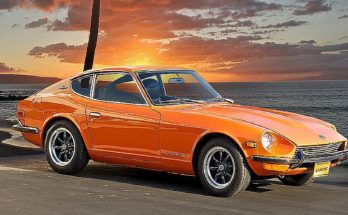
Could you imagine driving one of these in 1971?
In the 1970’s, fluctuations in oil prices, starting with the 73-74 oil crisis, caused massive changes in the ways Americans bought cars, alternating between their favorite big, long, comfortable v8s and the new compact-minis from the same companies in addition to tons of Japanese imports which no one particularly felt any attachment to but found highly practical.
Despite there being no songs about the Asian imports in many of our driveways, one of the most exciting cars of the whole decade was the 1970 Datsun 240-z. Why? In the words of 70’s historians Andrew Edelstein and Kevin McDonough, “Designed in Germany, this beautifully light and powerful sports car was as sleek as a Porsche and slicker than a Corvette and still cost less than $4,000 when introduced in 1971. Subsequent Z’s increased in price and speed, but lacked the compact beauty of the original.”
The Z actually debuted in 1969. It’s was first a 1969 Nissan S30, marketed as a Nissan Fairlady Z 240 in some markets and others as the Datsun 240Z, and was designed by a team led by Yoshihiko Matsuo, the head of Nissan’s Sports Car Styling Studio, and they started designing it in 1965. There was no specific direction for the car – just to develop a small roadster based around the existing 2 liter U20 engine (used in Datsun 2000 roadsters). There were two main designs the team worked on, and although management encouraged the other, more conservative design, Matsuo kept coming back to their sleek, sporty version of the Z. The plan changed in response to American MVSS safety regulations, too (as well as other difficulties with soft tops), prompting the team to work on a fastback/hatchback over a convertible Z that was part of the original design.
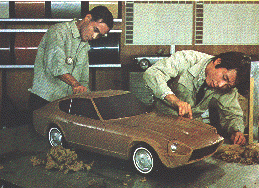
As far as power goes in those early models, the American 240Z had a 2.4 liter L24 inline-6 cylinder with twin Hitachi SU-type carbs, and was capable of 151 horsepower, while the Japanese version has the 2 liter and 130 horsepower.
They priced it low, around the same price as the somewhat-dated European MG, entering a market where European cars had American admiration, but Japanese cars didn’t. With the low price tag, the new look of the sleek, modern, well-performing sports car got a real reception in the States from both buyers and the auto press, and dealers soon had to deal with wait lists for the car. Beyond the car itself, the Datsun 240-Z had an impact in that it positively affected the world’s idea of Japanese cars. This fed back to Datsun, too, because with a broader acceptance, more cars of similar types sold, and that meant more dealers, manufacturers and parts, improving ease of buying a Z as well as of maintaining it over time.
Which Travel Trailers Are Made in Canada?
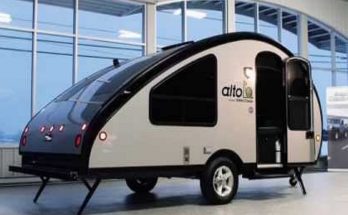
Much of the older generation still believes that brand loyalty is something to strive for, and though younger generations may not be as inclined, there’s still something to be said for knowing which brands work best for you. There are plenty of American brands available, but what about other offerings in North America? There are several Canadian brands that could be considered as well, both well-known and obscure, with plenty of options as to size, type, and cost.
The Safari Condo, for instance, is an aluminum travel trailer that caters to evironmentalists with a design that creates as little drag as possible to conserve fuel, and it’s made with nearly 100% recyclable parts. It also has a retractable roof and tinted glass for both privacy and freedom, whichever you decide you want on a given day. It also has an adjustable suspension height.
If you’re looking for a travel trailer for yourself and the family, and you’re in or at least closer to Canada, you may want to look up these brands and do some research: Safari Condo, Roulette ProLite, Taylor Coach, Armadillo Trailers, Bigfoot RV, and Escape Trailer. All of these are Canadian-based companies, working to build high quality travel trailers for travelers. If you get to rent or buy a travel trailer, make sure you don’t ignore Canada when planning out your North American trips.
